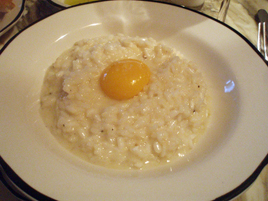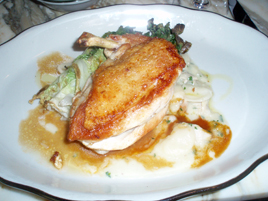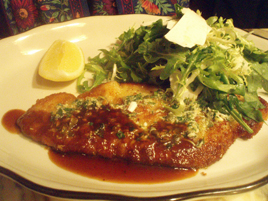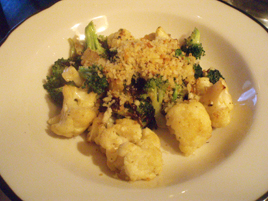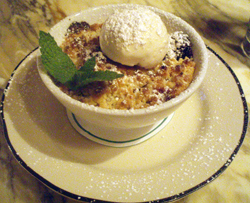Marc Forgione
 Friday, May 7, 2010 at 02:08PM
Friday, May 7, 2010 at 02:08PM  I visited Marc Forgione this week with colleagues from Chicago, who invited me to dinner, and—as is often the case—asked me to pick the restaurant. They were buying, which made the choice a bit awkward: deciding how someone else’s money would be spent. It needed to be a solid choice, without seeming to take advantage.
I visited Marc Forgione this week with colleagues from Chicago, who invited me to dinner, and—as is often the case—asked me to pick the restaurant. They were buying, which made the choice a bit awkward: deciding how someone else’s money would be spent. It needed to be a solid choice, without seeming to take advantage.
Marc Forgione had been in the back of my mind ever since it won a star in the 2010 Michelin Guide. With its rustic chic decor and seasonal cooking, it’s the kind of New York place that out-of-town visitors would like. Prices don’t break the bank, with entrées in the high $20s and low $30s.
I visited Marc Forgione two years ago, when it was called Forge. The cuisine struck me as solid neighborhood bistro food. Nothing wrong with that, but not Michelin territory. Frank Bruni apparently felt the same, denying it a full review in lieu of the Dining Briefs treatment.
My colleagues loved it, but I still don’t get the Michelin star. A Caesar salad was pedestrian. The dressing had been applied in the kitchen, leaving the lettuce slightly soggy by the time it reached the table. It was a basic salad that anyone could do at home—probably even me.
Sea bass was more impressive, a tender rectangle of fish with a crisp crust. The menu, however, had described it as “whole crispy red snapper.” The server advised that the kitchen was substituting bass for snapper, but did nothing to alter the impression that it was a whole fish—which it was not.
Both dishes seemed a tad over-salted, as I recall from my previous visit. Unlike my previous visit, there is no amuse-bouche. The bread service remains first-rate, with pillowy-soft rolls straight out of the oven.
The restaurant may be holding its own, if exactly thriving: All-you-can-eat pork sliders are just $16 on Tuesday evenings, with all-you-can-drink Brooklyn Lager for $14. It was not crowded on a Wednesday evening either, and it is practically always available on OpenTable.
Marc Forgione (134 Reade Street between Greenwich & Hudson Streets, TriBeCa)
Food: *
Ambiance: *
Service: **
Overall: *
 Marc Forgione in
Marc Forgione in  Cuisines: American,
Cuisines: American,  Restaurant Reviews
Restaurant Reviews 









